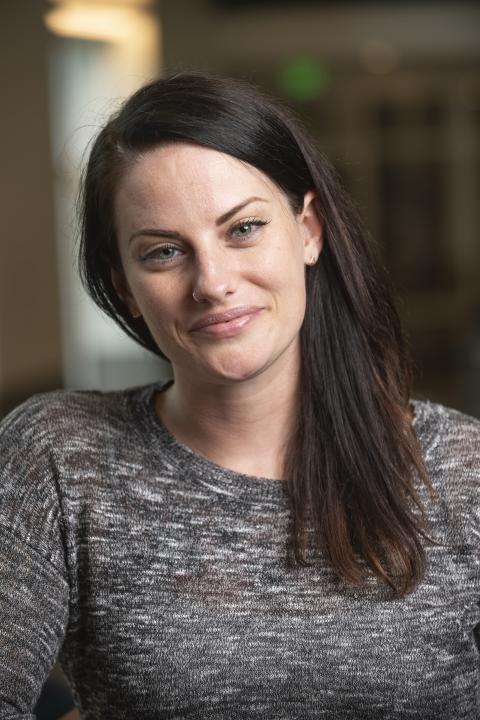
Amy Michael
Courses Taught
- ANTH 415: Human Evolution, Fossils & DNA
- ANTH 550: Intro to Forensic Anth
- ANTH 655: Bioarchaeology
- ANTH 660: Human Osteology
- ANTH 665W: Cold Cases
- ANTH 697: Special Topics/Cold Cases
- ANTH 699H: Honors Senior Thesis
- ANTH 797: AdvTop/Race and Racism
Education
- Ph.D., Anthropology, Michigan State University
- M.A., Anthropology, Michigan State University
- B.A., Anthropology, University of Iowa
Research Interests
- Anthropology
- Archaeology
- Bone and tooth histology
- Dental anthropology
- Dental Health & Hygiene
- Effects of drugs and alcohol on skeletal microstructure
- Forensic anthropology
- Forensic Science
- Maya bioarchaeology
- Microscopy
- Pathology
- Skeletal Diseases
- Skeletal trauma
- Skull-photo superimposition and image comparison
Selected Publications
Blatt, S. H., Michael, A. R., Isa, M. I., & Redgrave, A. (2022). Bye-bye binary: collaborative, gender-expansive strategies for identification of Trans Does. In AMERICAN JOURNAL OF BIOLOGICAL ANTHROPOLOGY Vol. 177 (pp. 18-19). Retrieved from https://www.webofscience.com/
Michael, A. R., Blatt, S. H., Isa, M., Redgrave, A., & Ubelaker, D. H. (2022). Identification of a decedent in a 103-year-old homicide case using forensic anthropology and genetic genealogy. FORENSIC SCIENCES RESEARCH. doi:10.1080/20961790.2022.2034717
Michael, A., Bengtson, J., & Blatt, S. (2021). Genes, Race, Ancestry, and Identity in Forensic Anthropology: Historical Perspectives and Contemporary Concerns. Forensic Genomics, 1(2), 41-46. doi:10.1089/forensic.2021.0004
Michael, A. R., & Blatt, S. H. (2021). The Triad Approach for Human Identification: The Role of Biological Anthropologists in Collaborative Forensic Genetic Genealogy Efforts. Forensic Genomics, 1(2), 60-71. doi:10.1089/forensic.2020.0006
Blatt, S., & Michael, A. (2020). Bridging the gap in identification: Sella turcica bridging as a potential positive identification factor. Forensic Imaging, 21, 200384. doi:10.1016/j.fri.2020.200384
Blatt, S. H., Petersen, K., & Michael, A. R. (2020). Estimating Age of Mature Adults from Degeneration of the Medial End of the Clavicle in an African American Sample. Forensic Anthropology, 3(1), 39-49. doi:10.5744/fa.2020.1005
O'Gorman, J., Bengtson, J. D., & Michael, A. R. (2020). Ancient history and new beginnings: necrogeography and migration in the North American midcontinent. WORLD ARCHAEOLOGY, 52(1), 16-34. doi:10.1080/00438243.2019.1736138
Michael, A., Wrobel, G., & Biggs, J. (2018). Understanding Late Classic Maya mortuary ritual in caves:
dental evidence of health from macro- and microscopic defects and caries.. In Bioarchaeology of Pre-Columbian Mesoamerica.Michael, A. R., & Bengtson, J. D. (2016). Chronic alcoholism and bone remodeling processes: Caveats and considerations for the forensic anthropologist.. J Forensic Leg Med, 38, 87-92. doi:10.1016/j.jflm.2015.11.022
Michael, A. (n.d.). The first five years of the Central Belize Archaeological Survey – political and economic development. Research Reports in Belizean Archaeology.